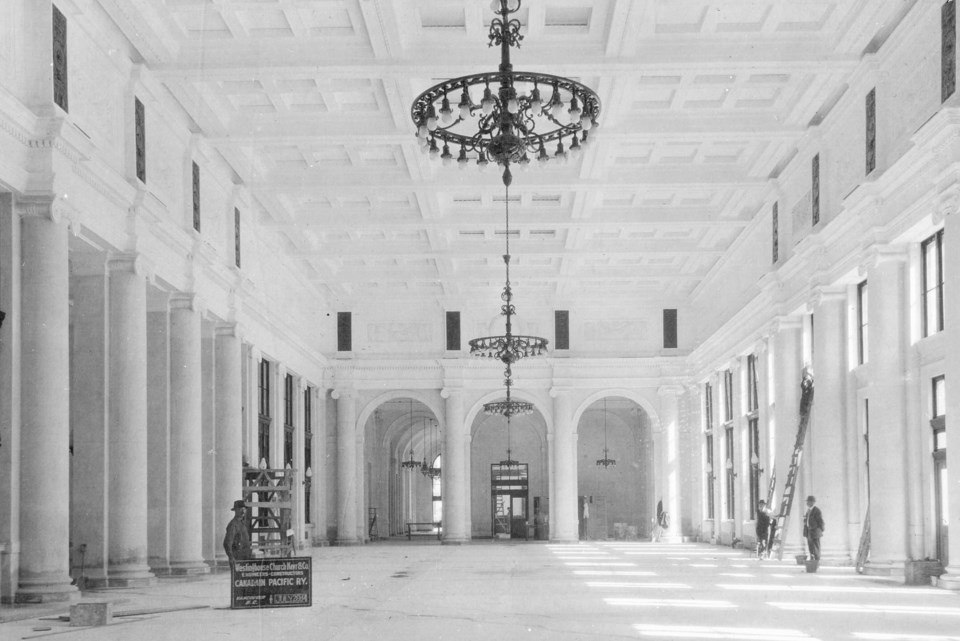Waterfront Station has been one of Vancouver's most important buildings for over 110 years.
The current building has been central to the city's transportation network. When it opened in 1914, it was the terminus of the Canada Pacific Railway and has remained central to how people get around the area ever since.
Even now it's TransLink's busiest station, as far as passengers go, with an estimated 50,000 people passing through the building each day. It acts as the terminus for two of the SkyTrain's lines (Expo and Canada), as well as one of two ports for the SeaBus and the final stop on the West Coast Express. That's not mentioning bus stops nearby.
And speaking of nearby, it's a short walk from the cruise ship port, the Helijet's landing pad, where the seaplanes take off, and Hullo Ferries' Vancouver dock.
Given all that, it may seem underappreciated when compared to many of Vancouver's top-tier architectural stars like the Lions Gate Bridge, Canada Place, the Marine Building, and Science World.
So here are five things you (probably) didn't know about Waterfront Station (not including the Starbucks fact, since it's been used before).
1. The late last train
While it's still used for the SkyTrain, for more than half of its existence, Waterfront Station was used for transnational trains.
CPR was the first company, with Via Rail taking over in the late 1970s. That service was moved to Pacific Central as Via put all its trains in one place and plans for what would become the SkyTrain were put into place.
So the final train set out on Oct. 27, 1979, with 200 people headed for Montreal.
It left 15 minutes late.
2. It was the third CPR Station
CP Rail plays an important role in Vancouver's history, connecting the city to the rest of the country.
The first railway to cross Canada wasn't originally planned to get to Vancouver. The original plan was for it to end in Port Moody; that would have drastically affected the form of this city 150 years later.
But the rail was extended, and a station was built at the port in Vancouver, near where the current station stands.
Given it was such a big, important port and railway station, a new, grand station was designed and built. It was erected at the foot of Granville Street around 1900.
That station is actually the one seen in the first video of Vancouver, but it's not the one that stands now. After around 15 years, it was decided a new station was needed, and the current version was built next to the old one, which would have been around 12 years old.
That would be akin to deciding the Shangri-La tower needed to be replaced now.
3. It's considered rather haunted
While it's hard to quantify how haunted a place is in comparison to others, it seems the consensus is that Waterfront Station is a good place for ghost seekers.
Destination Vancouver, while focusing on living tourists most of the time, has it topping the list of most haunted places in Vancouver, while the Ghosts of Vancouver blog calls it "one of the most haunted buildings in downtown Vancouver."
Its reputation goes beyond Vancouver, too. For example, one popular YouTube channel focusing on creepy things lists it as one of the "10 Most Haunted Train Stations Around the World," while another channel focused on trains featured it as a rare case of a haunted train station.
4. A massive project nearly drastically changed the property
To be clear, the project nicknamed "the Icepick" wouldn't have changed the facade of the historic building, but it definitely would have changed a lot of other things.
It was a 26-story tower proposed to be next door to Waterfront Station. Very next door. While the bottom of the building would have been narrow, it widened several stores up, hanging over areas below, including the edge of the 110-year-old station.
As of 2022, it was cancelled.
However, others are still interested in using the land around the station. In 2022, Perkins and Will showed potential designs for the areas directly adjacent to the station. And again in 2024, another set of drawings was released by a different group of what could be built in the area, with another tower right beside Waterfront Station.
5. It just appeared on The Onion
Sure, Waterfront station has shown up on films and TV shows several times in the past, but just recently the Onion, the satirical "news source," used what appears to be stock footage of the inside of the busy station for one of its "news" videos.



